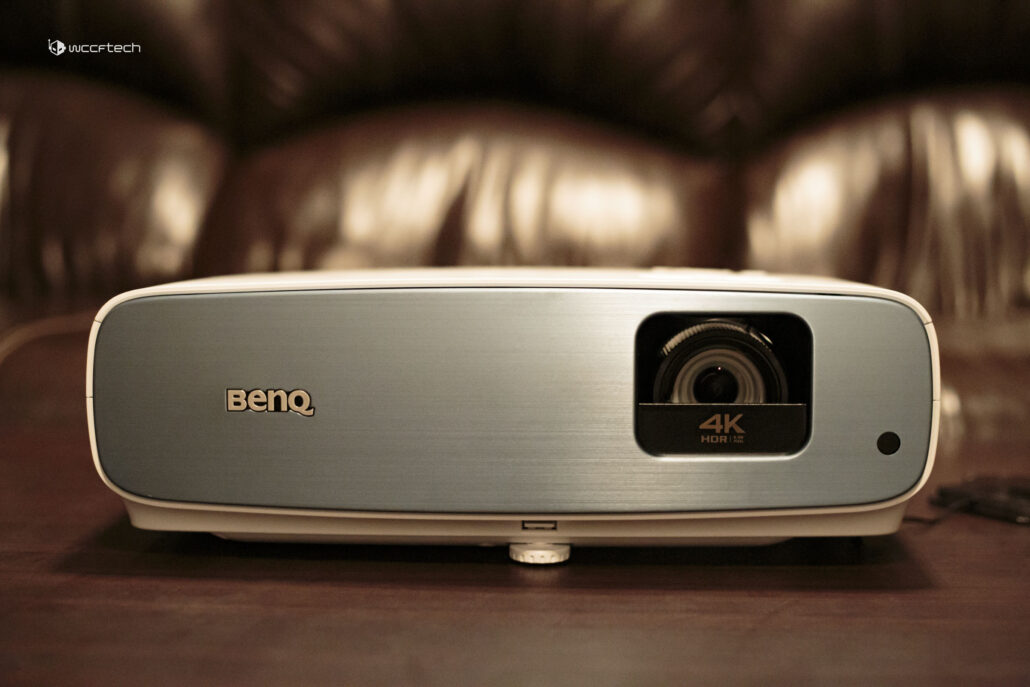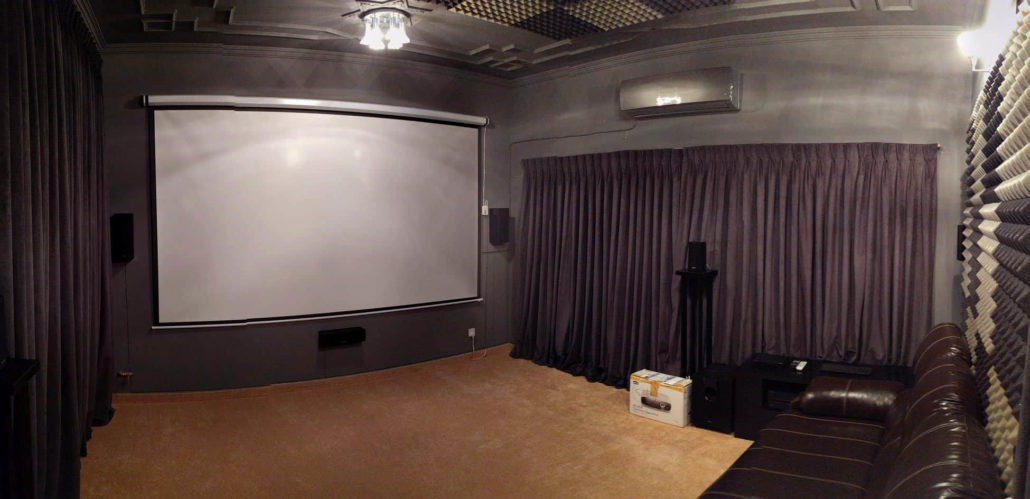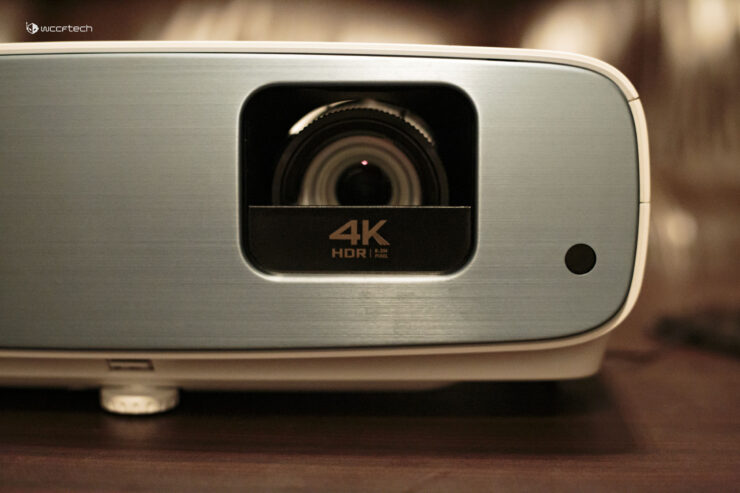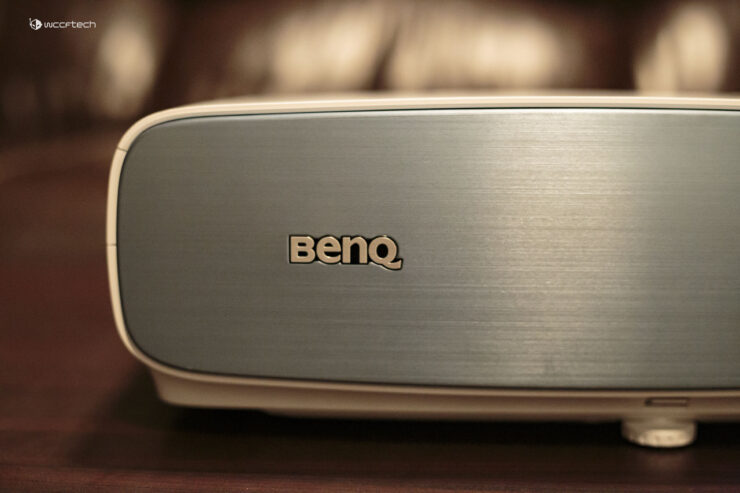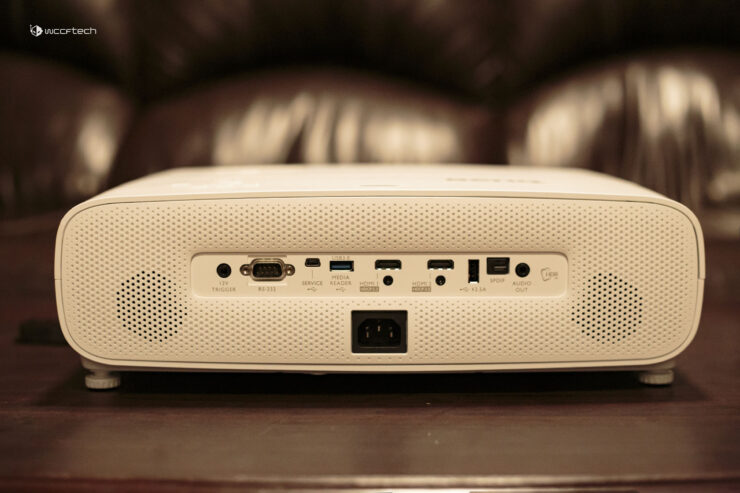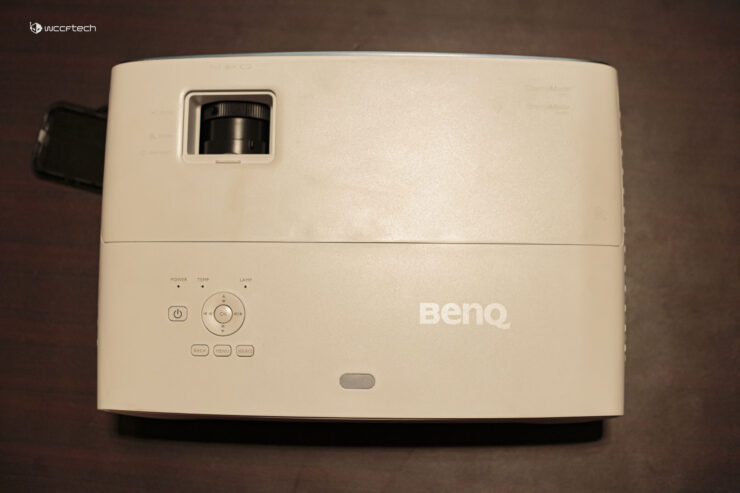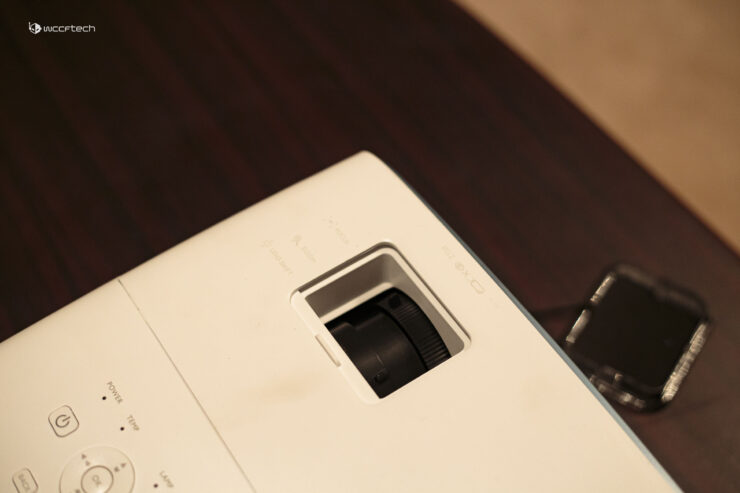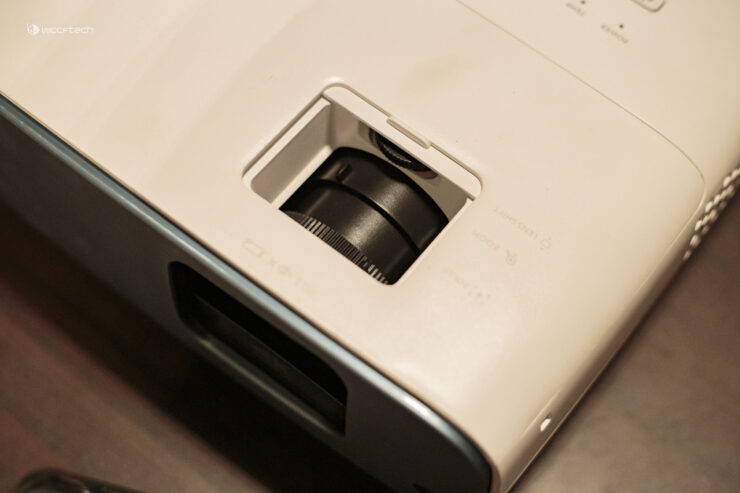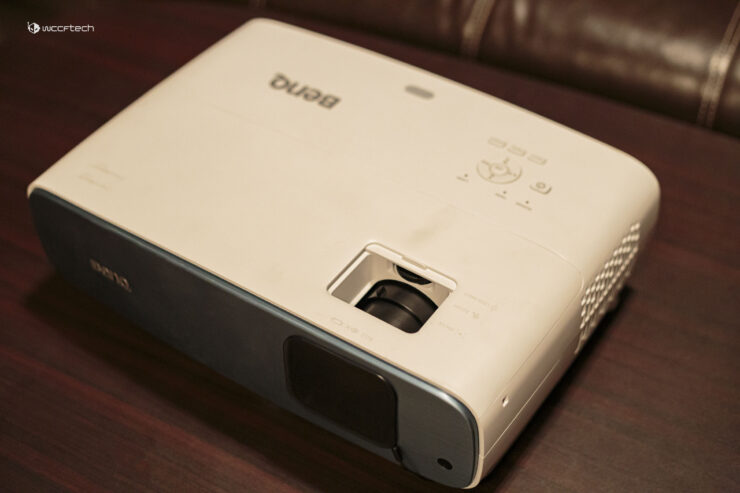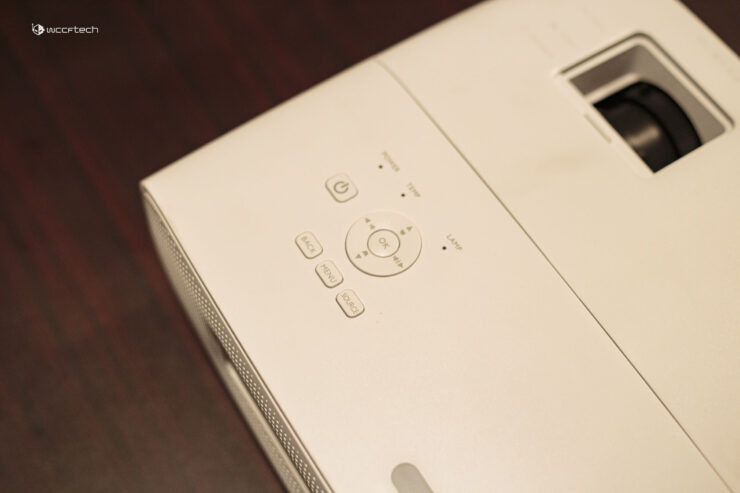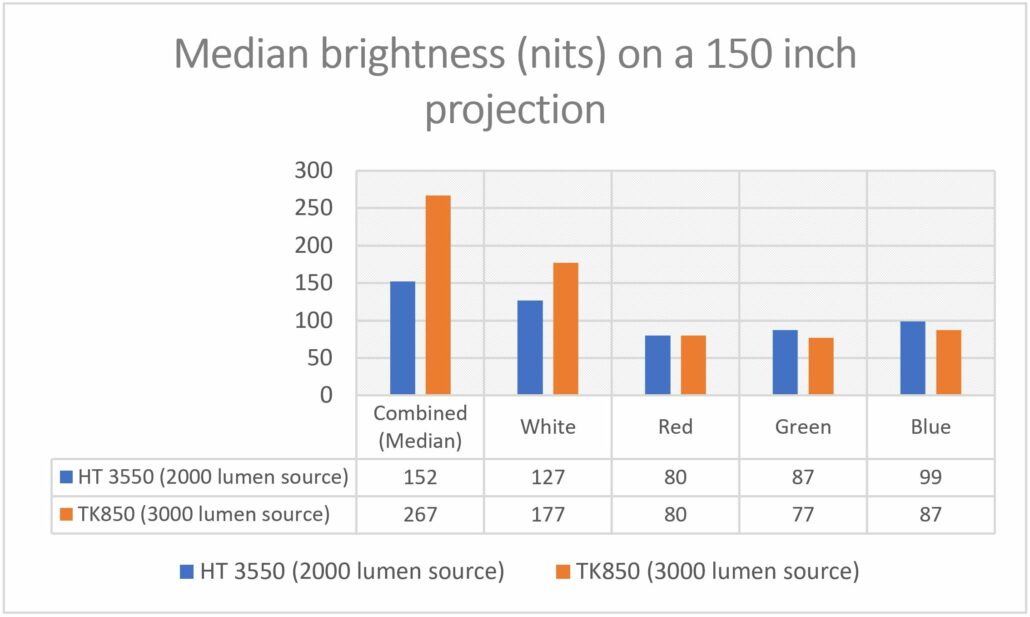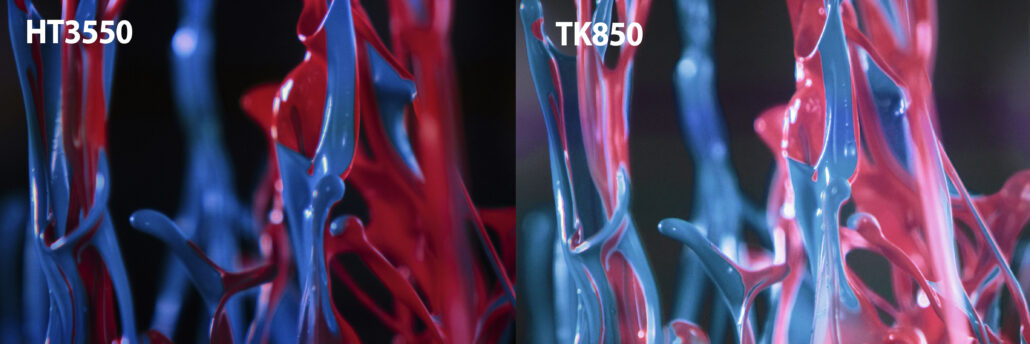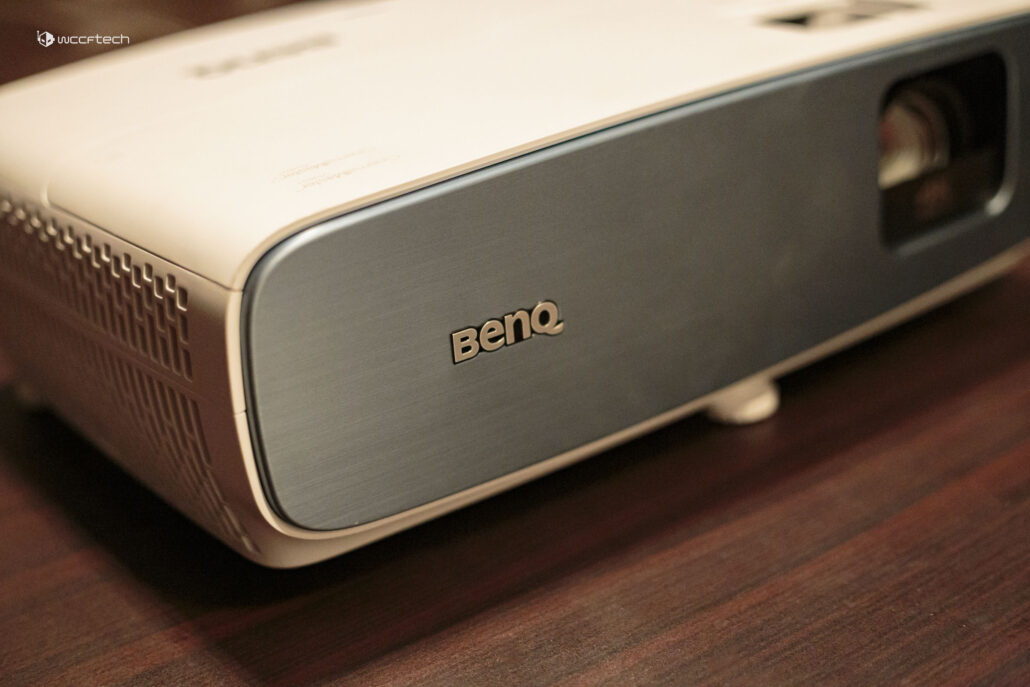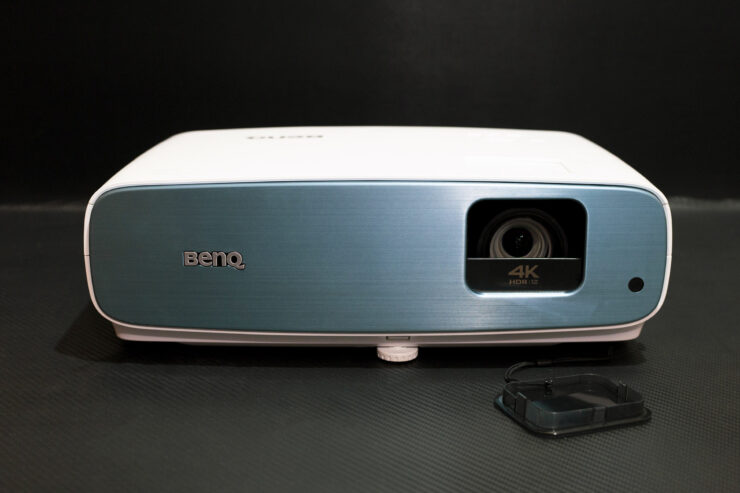
If you are on the market for a mid-end home theater projector and can’t decide between the BenQ HT 3550 and the BenQ TK 850, then this review is for you. We reviewed the HT 3550 a couple of months back and couldn’t have been more impressed, so when BenQ asked us to review the living room sibling of the same projector: the TK 850, we readily accepted. The TK 850 is in all regards a living room projector and replaces the older TK800 model. It has a 3000-lumen source (compared to the HT 3550’s 2000 lumen source) and should be the ideal companion when combined with an ALR (ambient light rejecting screen). Priced at $1497, it goes up primarily against 4K projectors from Optoma and packs quite a punch.
1. Introduction
In typical Wccftech fashion, let’s start with the technology at the heart of the TK850. The projector is powered by the second generation Texas Instruments 0.47″ DMD XPR chip which notably solves the light-border problem that was plaguing first-generation chips including the TK800. For the uninitiated, the XPR chip is able to offer true 4k resolution (this is not 4k enhanced/upscaled) with true resolving power of 4k pixels. The chip achieves this by projecting a 1920×1080 grid and then shifting it 4 times to the left, right, top and bottom (so you get 4x 1080p grids on each corner) so fast that persistence of image (in your eye) means you see the four separate 1080p grids as a single 4k image.
This is how CRT monitors of olde used to work as well. Just so I am absolutely clear about this, this is real 4K, unlike 4K enhanced projectors which just project a sharpened 1080p native image without actually projecting 4k pixels.
The TK850 also offers a massive upgrade over first-generation projectors by incorporating a Dynamic Iris. This is a feature which is completely unheard of in budget 4k projectors (compared to Sony’s high-end offerings which go over $4000, this is pretty budget indeed) and allows for much deeper blacks than a conventional iris. Support of 10-bit color and HDR 10 is of course part and parcel of this projector.
3D support was not removed from this projector and that is always lovely to see considering many 4K projectors in this range have dropped this standard. So if you are someone that wants to retain the ability to watch 3D movies, you will not be disappointed in this. The lumen count is still 3000 lumens just like the TK800 it replaces.
Finally, another major improvement over the TK800 is the fact that the TK850 has the same throw ratio as the HT 2050 (or other medium-throw projectors), which means it can fill a 150-inch screen at less than 15 feet and can serve as a drop-in replacement for the same. And the best part? with the new lens configuration, moving the zoom no longer disrupts the focus. If you are an HT2050 owner, you will not need to worry about moving the mount, simply do a swap and it will work like a charm.
2. Unboxing and first look
The BenQ TK 850 comes well packed as always and should survive a journey pretty much anywhere in the world. The packaging contents are simplistic and contain the remote, the projector and a power cable.
The TK 850 features a sleek metallic face with a newly designed lens configuration that stays recessed inside the body. The cover is attached to the projector so you don’t lose it. The mounting screws were a bit awkwardly placed but I was eventually able to swap it for an HT2050. The IO port at the back features a generous array of connections including powered HDMI ports and some legacy ports.
The focus wheels (which actually maintains focus even when you adjust screen size) is in placed in the usual spot along with a dust cover. Compared to the bulbous looking TK800 that it replaces, this is definitely a step in the right direction and feels a lot more premium. The metallic face has 4K HDR printed in gold letters and this is a projector that is going to look good in any setting.
3. Image quality, color gamut, and performance
Our testing methodology is pretty harsh as we like to test projectors at their maximum setting (which is usually a maximum manufacturer recommended image of 150 inch). The TK850 outputs almost twice the peak median brightness at 150 inches than a HT 3550. This is, of course, to be expected as the former has an RGBRGB color wheel while the TK850 has an RGBW color wheel. The latter allows for more “brightness” at the cost of color depth.
We took our trusty lux meter and measured the different color channels after calibrating the TK 850 and the results were once again in line with what we expected. Interestingly, the red channel on both the HT 2550 and TK850 output exactly the same levels of nits – which might explain why the HT3550 tends to have incredibly punchy reds.
For our audience – 150 nits of brightness for a completely dark room is the bare minimum and usually the level of brightness you can expect from typical cinemas. 300 nits of brightness (which the TK850 can manage) are actually similar to most LCD screens and will have a more “TV” look to them. Keep in mind, however, that all these measurements are on a 150-inch screen and if you drop down to say, a 100-inch screen, the results will be very different.
The picture above is a calibrated and normalized picture of the same image on both the 3550 and TK850. The additional white luminance can be seen – and this is actually a good thing. For those of you that actually want to set this up as a living room projector, you will want to invest in an ALR (Ambient Light Rejecting) screen. That screen, when combined with the brightness of the TK850 would actually allow you to have a perfect image at up to 120 inches of screen size with just the curtains drawn and the lights dimmed. This is the perfect solution if you don’t want to invest in creating a dark room for a home theater and just want to watch some games with the buddies over.
The low input lag and latency of the projector combined with motion smoothing algorithms also make this an excellent choice for sports lovers. The sports mode outputs an incredibly TV-like image at the full 150 inches and we were blown away by the fluidity. Our full set of reference, normalized and calibrated comparison images is below (you can click on them to expand the image). Please note the image oversaturation and banding you see in these images is due to artifacts of the CMOS-based sensor of our DSLR and not present in the actual real-life image of the HT3550 or the TK850.
As you can see, the TK850 dumps a ton of brightness into an image and is really not designed to be used with a dark room (all pictures shown were shot in a dark room). If you do end up buying this and change your mind, BenQ was kind enough to include a Cinema mode that will kill most of the brightness and the TK850 will do its level best to achieve a reference image that is much closer to the HT 3500 (so its is sort of a win-win situation). This level of brightness can be tamed with a screen size of up to 100 inches with a normal screen and up to 150 inches with an ALR screen.
4. Conclusion
If you are someone that wants to use a projector without the hassle of constructing a dedicated home theater and blackout room then the TK850 is for you. Combining it with an ALR screen offers incredible value and BenQ has packed in a ton of features that make this projector punch far above its weight class. To give you an idea, Dynamic Iris can usually be found in Sony projectors that cost upwards of $4000. Combining this projector with an ALR screen would allow you to watch movies and sports at up to a 150-inch image at under $2500 – which is significantly higher value than buying a TV of a similar size.
If you are this person, then I can wholeheartedly recommend this projector to you. Unlike Optoma variants, this also retains 3D capability so if you ever want to dabble in that, you can purchase DLP active shutter glasses and host quite a party. The TK850 wins our Editor’s Choice Award for “Best ‘Bang For Buck’ Living Room Projector”
The post BenQ TK850 4K HDR Projector Review appeared first on Wccftech.

